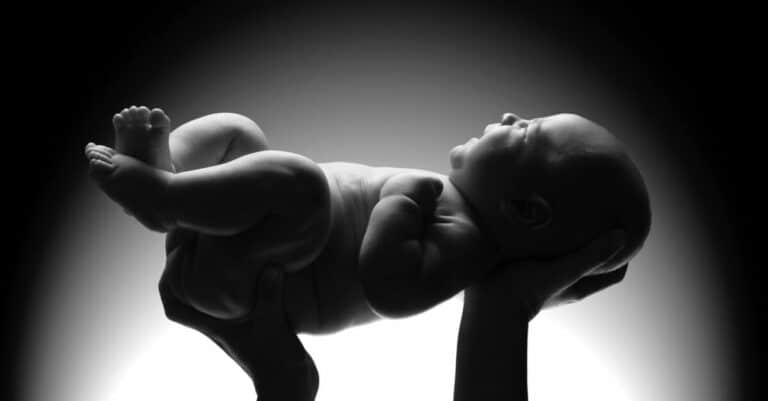What Is Gestosis? Signs, Symptoms, and Solutions

Gestosis is an overall term for a spectrum of pregnancy-related medical conditions. If you notice any signs of this condition, take action quickly so you can minimize the risk for the mother and unborn baby. Here’s what to look for:
What Is Gestosis?
Gestosis is a general term for various diseases that only occur during pregnancy. Some refer to it as toxemia or a type of pregnancy poisoning since it causes symptoms, including high blood pressure and hypertension. We don’t know what exactly triggers pre-eclampsia or toxemia, and symptoms can vary from person to person. These symptoms may occur for the first time during pregnancy or due to pre-existing conditions in the pregnant woman.
There’s a distinction between whether your symptoms occur before or after the 20-week mark. Early signs include mild and severe morning sickness. Late gestoses include pre-eclampsia (formerly called toxemia) and severe forms of eclampsia accompanied by increased blood pressure, proteinuria, water retention, liver, and renal dysfunctions.
Gestosis Includes Severe Morning Sickness
Almost all pregnant women tend to suffer from morning sickness in the first trimester, which includes a queasy feeling and occasional vomiting. However, compared to “normal” morning sickness, hyperemesis gravidarum is much more severe. Symptoms include severe odor sensitivity and an urge to gag, sensitivity towards light, a feeling of faintness, and an increased heart rate. Sufferers from excessive vomiting perceive it as a severe ordeal. Frequent vomiting may cause deficiency symptoms and disorders in water and mineral balances. Infusions may be necessary in extreme cases to ensure that the pregnant woman gets all the fluid and nutrient requirements.

Preeclampsia Is a Classification of Gestosis
Typical symptoms of preeclampsia are such as increased blood pressure and water retention. This condition usually only appears in the second half of pregnancy. Pre-eclampsia very rarely occurs in the first half of pregnancy.
Preeclampsia may occur in various grades of severity. Mild preeclampsia occurs quite frequently, i. e. one in ten first-time mothers have it. Expectant mothers hardly notice the mild form. The gynecologist can identify preeclampsia symptoms. This is the reason why blood pressure and urine are tested for protein during each examination. Treatment varies, depending on the severity of preeclampsia. Regular blood pressure controls are essential for all forms. If the increase in blood pressure is too severe, doctors will administer medication to lower blood pressure. In the case of severe preeclampsia, the expectant mother is admitted to a hospital for close monitoring.
Eclampsia – A Hazardous Form of Gestosis
This is a rare but dangerous condition, with seizures that endanger the unborn baby’s health and the mother. Eclampsia may occur during pregnancy and birth, but also in the days thereafter. The expectant mother must go to a hospital immediately as this condition may cause complications such as acute renal failure, cerebral edema, thromboses, retinal damage, bleeding, and placenta insufficiency. Signs and symptoms for eclampsia include flickering vision, discomfort, severe headaches, and seizures.
HELLP syndrome – A Form of Gestosis Needing Immediate Care

For a long time, HELLP syndrome was thought to be the most severe complication of gestosis. However, according to recent knowledge, symptoms may occur suddenly without previous signs of gestosis.Dr. Louis Weinstein used the term HELLP syndrome in 1982 to describe the following symptoms:
- H Hemolysis – breakdown or destruction of red blood cellsEL Elevated liver enzymesLP Low platelet count
A fully developed HELLP syndrome endangers the life of the mother and her unborn baby. This is why in most cases, doctors decide to perform a cesarean section without delay. In many cases, the mother must be put into intensive care. To date, it has not been clearly clarified what triggers the HELLP syndrome. It commonly develops within a few hours, with pain in the right upper abdomen and the appearance of swelling and water retention in the extremities and/or in the face.Other symptoms to look for that could indicate HELLP syndrome include:
- Visual impairmentYellow discoloration of the skinSudden nauseaDiarrheaVomitingOr severe itching of the skin
Preventative measures do not currently exist. Fortunately, HELLP syndrome is a rare condition that statistically only occurs in 0.2% to 0.85% of all pregnancies.
Important Screening Tests for Gestosis
Since there is no effective prevention for the various gestoses to date, it is particularly important to take advantage of prenatal screening tests. Information about medical care during pregnancy and after birth can be found through the Centers for Disease Control and Prevention. The guidelines suggest the type and extent of medical care needed and provide reports on most screening procedures that doctors perform.
Even though these procedures may seem overwhelming, remember you are not alone! Friends, family, and support groups can also provide you some excellent insights and support during pregnancy. But if you have further medical questions, be sure to ask your physician for optimal medical care.





